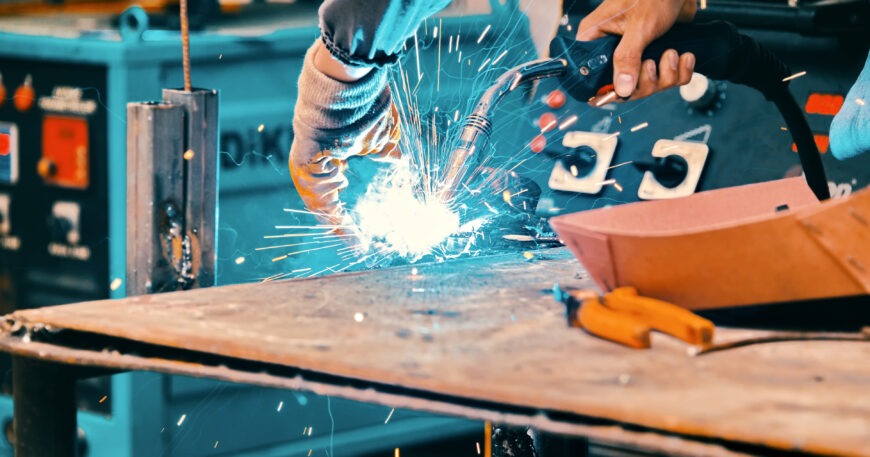When welding, the position is always important. This refers to the position in which welding takes place or where the weld joint is located during the welding process. There are a whole range of different options for this. From vertical to horizontal and everything in between, the position of the welding joints presents its own unique challenges.
The position of the welding joint
The surface for the welding and the seam axis over which welding takes place determine how work can be carried out. There are two welding positions at the extreme ends of the scale - the ideal position and its exact opposite.
The ideal position for welding is the so-called trough position. The weld seam lies horizontally and the workpieces form an edge with it in which the weld pool is located. There are different versions of the tank position.
Quite simply, a trough layer can be placed between two workpieces that are joined with a butt seam. Both opposing edges are bevelled so that they form a V. This is the absolute ideal case, the simplest of all tray layers.
A trough position can also be created when a fillet weld is placed between two workpieces. In this case, both are at a 90° angle to each other. However, they are each inclined by 45° so that the seam to be set is again exactly in a trough. A pipe can also be attached to another workpiece in this way.
The trough position is the easiest welding position to work in. The opposite of this is the overhead position. Here again, the joint of the weld seam horizontal. However, it is inverted and overhead so that the seam points directly downwards.
All other welding positions can be categorised between the trough position and the overhead position. This is not about the geometry of the workpieces. It is simply a question of the position in which welding takes place. Then there is the welding direction. This differentiates between upward and downward welding.
The codes for the welding positions
The welding positions themselves are standardised. They are derived from DIN EN ISO 6947, which standardises seven positions known as the main welding positions. There is a code for all of them and they apply to all welding processes, regardless of whether they are MAG, GMAW or GMAW, TIG- or other procedures.
While DIN EN ISO 6947 is a standard with international validity, the designations in the USA differ from this standard. There, G describes a butt weld and F a fillet weld. The positions according to DIN EN ISO 6947 and the American system look like this:
-
- German PA or American 1G: This is the described tank position. The surface of the weld seam is at an angle of 0° to the vertical.
-
- German PB or American 2F or 2FR for a rotating pipe: The weld seam is located between the 1 o'clock and 2 o'clock position and the surface of the weld seam is at an angle of 45° to the vertical.
-
- German PC or American 2G: This is the so-called transverse position. The surface of the weld seam is at an angle of 90° to the vertical.
-
- German PD or American 4F: The so-called horizontal overhead position, whereby the surface of the weld seam is at an angle of 135° to the vertical.
-
- German PE and American 4G: The overhead position in which the surface of the weld seam is at an angle of 180° to the vertical.
-
- German PF and American 3G increasing: The axis of the weld seam is vertical. Welding is carried out in an upward direction.
-
- German PG and American 3G falling: Here too, the axis of the weld seam is vertical. However, it is welded downwards.
There are further, separate welding positions for pipes. These look like this:
-
- German PH or American 5G rising: Here, the pipe is fixed and welded in a rising position.
-
- German PJ or American 5G falling: The pipe is fixed and is welded in a falling position.
-
- German PK without American equivalent: Orbital welding of a pipe.
From the trough positions, which are the easiest to weld, to the overhead position, which is the most challenging, all welding positions and directions are standardised. Whilst the standard is internationally valid, the Americans go their own way, but essentially follow the same approach.



